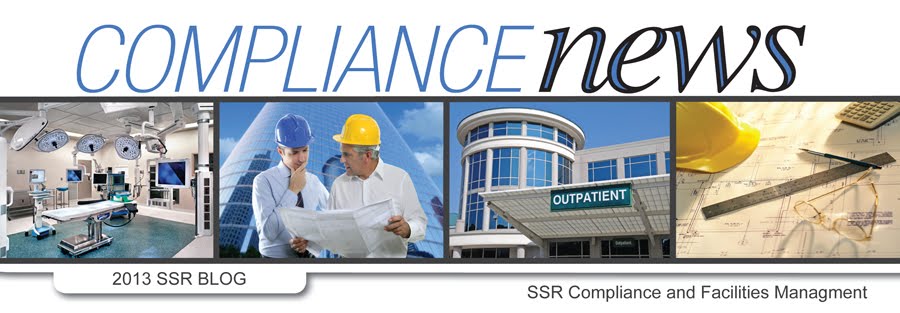I recently received the question - "Is there a requirement for generator annual PM?
The short answer is yes, but knowing what to do requires knowing what each generator's manufacturer recommends.
NFPA Disclaimer: Although the author is Chair of the NFPA Technical Committee on Emergency Power Supplies, which is responsible for NFPA 110 and 111, the views and opinions expressed in this message are purely those of the author and shall not be considered the official position of NFPA or any of its Technical Committees and shall not be considered to be, nor be relied upon as, a Formal Interpretation. Readers are encouraged to refer to the entire text of all referenced documents. NFPA members can obtain NFPA staff interpretations at www.nfpa.org.
NFPA 99 references NFPA 110, and it’s all based upon manufacturer’s recommendations as far as NFPA 110 is concerned. Every emergency generator manufacturer that I am aware of recommends annual maintenance in the O&M manual.
From NFPA 99-1999:
3-4.4 Administration (Type 1 EES).
3-4.4.1 Maintenance and Testing of Essential Electrical System.
3-4.4.1.1 Maintenance and Testing of Alternate Power Source and
Transfer Switches.
(a) Maintenance of Alternate Power Source. The generator set
or other alternate power source and associated equipment,
including all appurtenant parts, shall be so maintained as
to be capable of supplying service within the shortest time
practicable and within the 10-second interval specified in
3-4.1.1.8 and 3-4.3.1. Maintenance shall be performed in ac-
cordance with NFPA 110, Standard for Emergency and Standby
Power Systems, Chapter 6.
From NFPA 110-1999:
Chapter 6 Routine Maintenance and
Operational Testing
6-1 General.
6-1.1* The routine maintenance and operational testing program
shall be based on the manufacturer’s recommendations,
instruction manuals, and the minimum requirements of this
chapter and the authority having jurisdiction.
6-1.2 Consideration shall be given to temporarily providing a
portable or alternate source whenever the emergency generator
is out of service.
AND …
6-3 Maintenance and Operational Testing.
6-3.1* The EPSS shall be maintained to ensure to a reasonable
degree that the system is capable of supplying service
within the time specified for the type and for the time duration
specified for the class.
6-3.2 A routine maintenance and operational testing program
shall be initiated immediately after the EPSS has passed
acceptance tests or after completion of repairs that impact the
operational reliability of the system.
6-3.3 A written schedule for routine maintenance and operational
testing of the EPSS shall be established.
6-3.4 A written record of the EPSS inspections, tests, exercising,
operation, and repairs shall be maintained on the premises.
The written record shall include the following:
(a) The date of the maintenance report
(b) Identification of the servicing personnel
(c) Notation of any unsatisfactory condition and the corrective
action taken, including parts replaced
(d) Testing of any repair for the appropriate time as recommended
by the manufacturer
6-3.5* Transfer switches shall be subjected to a maintenance
program including connections, inspection or testing for evidence
of overheating and excessive contact erosion, removal
of dust and dirt, and replacement of contacts when required.
6-3.6* Storage batteries, including electrolyte levels, used in
connection with Level 1 and Level 2 systems shall be inspected
at intervals of not more than 7 days and shall be maintained in
full compliance with manufacturer’s specifications. Defective
batteries shall be repaired or replaced immediately upon discovery
of defects.
If you do not have your generator set manufacturer's O&M manual, and cannot obtain it from the manufacturer's local office, service representative, factory, or website, you could use the generic recommendations in the NFPA 110 Annex. In that case I suggest you go with the NFPA 110-2010 Annex, since those recommendations are more updated than the 1999 edition. But the first source should always be the generator manufacturer.
There is similar (and some updated) wording in a more recent edition of NFPA 110, but the chapter numbering changed.
From NFPA 110-2010:
Chapter 8 Routine Maintenance and
Operational Testing
8.1* General.
8.1.1 The routine maintenance and operational testing program
shall be based on all of the following:
(1) Manufacturer’s recommendations
(2) Instruction manuals
(3) Minimum requirements of this chapter
(4) The authority having jurisdiction
8.1.2 Consideration shall be given to temporarily providing a
portable or alternate source whenever the emergency generator is out of service.
etc.
Finally, don't forget TJC’s latest EC.02.05.01, EP3 and EP4.
 Automatic sprinkler piping and hangers are regularly found to be used supporting items such as, but not limited to, other piping systems, electrical conduit (as pictured), electrical power and lighting, communication wires, and a variety of other system components above ceilings. While contractors utilize the route of sprinkler piping through a building to support these items, failure of a single sprinkler pipe or hanger could result in a catastrophic failure of the piping system and cause extensive water damage. Unless you are prepared to quickly control water flow from any point in the building, an automatic sprinkler system will produce many gallons of water per minute flowing from an open ended pipe. A fire pump will contribute to increased water flow and pressure.
Automatic sprinkler piping and hangers are regularly found to be used supporting items such as, but not limited to, other piping systems, electrical conduit (as pictured), electrical power and lighting, communication wires, and a variety of other system components above ceilings. While contractors utilize the route of sprinkler piping through a building to support these items, failure of a single sprinkler pipe or hanger could result in a catastrophic failure of the piping system and cause extensive water damage. Unless you are prepared to quickly control water flow from any point in the building, an automatic sprinkler system will produce many gallons of water per minute flowing from an open ended pipe. A fire pump will contribute to increased water flow and pressure. 



